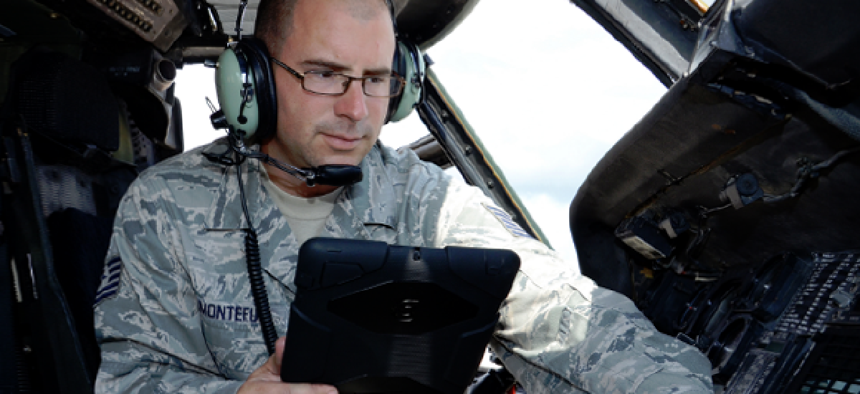Air Force to test NIPRnet access for iPads


Connecting state and local government leaders
Recent advances in mobile device security and the ability to compartmentalize information have made it possible to further integrate iPads into Air Force networks.
In 2013 the Air Force ordered more than 16,000 Apple iPad 3s to replace the paper-based navigation charts and flight manuals pilots carried. These “electronic flight bags” not only saved money and weight (as much as 100 pounds), but they also delivered a better user experience, even though they could not access any networks, Air Mobility Command’s Jeff Shields told Defense Systems.
With the number of iPads now up to 30,000, Air Force CTO Frank Konieczny wants to connect some of them to the Defense Department's classified network -- but not before they pass security tests to keep new vulnerabilities from being introduced to Air Force networks. "One of the concerns that we have is that we want to make sure that the e-books...on the iPads can actually be accessed from the flight line in a certain way that they can have interconnectivity back and forth with the logistic centers," he said in a May 3 interview with FCW, a sister site to GCN.
As of now, the iPads do not even connect to DOD's unclassified network, known as NIPRNet, he said. But recent advances in mobile device security and the ability to compartmentalize information have made it possible to further integrate iPads into Air Force networks, Konieczny said. He spoke with FCW after his appearance at a conference in Washington hosted by FedScoop.
Although an iPad's electronic transmissions could pose a risk to sensitive aircraft equipment, the ability for Air Force personnel to access unclassified and classified networks from their iPads could give them valuable data at their fingertips, he said.
The Air Force's IT governance body will review a proposed trial deployment of iPads on NIPRNet in the coming weeks, Konieczny said, adding that the pilot project could be underway this summer or fall.
The service is perhaps a year away from connecting some of its iPads to the classified SIPRNet because that access will require more testing, he said. The goal is to reduce a device's functionality to one mode on SIPRNet, such as using a bar code reader for identification, he said. The more functions enabled on a device, the more potential attack vectors for hackers.
A longer version of this article originally appeared on FCW, a sister site to GCN.




